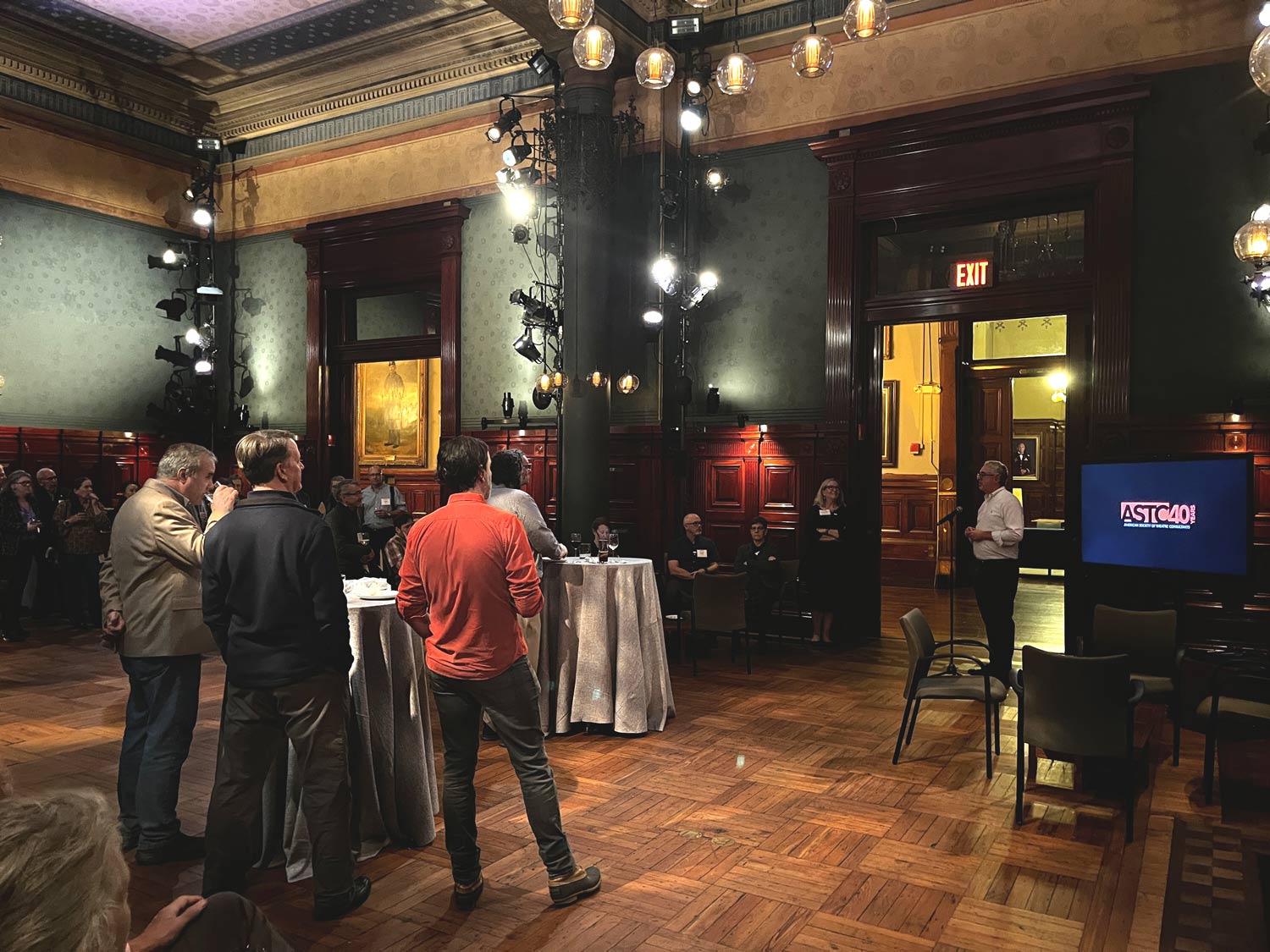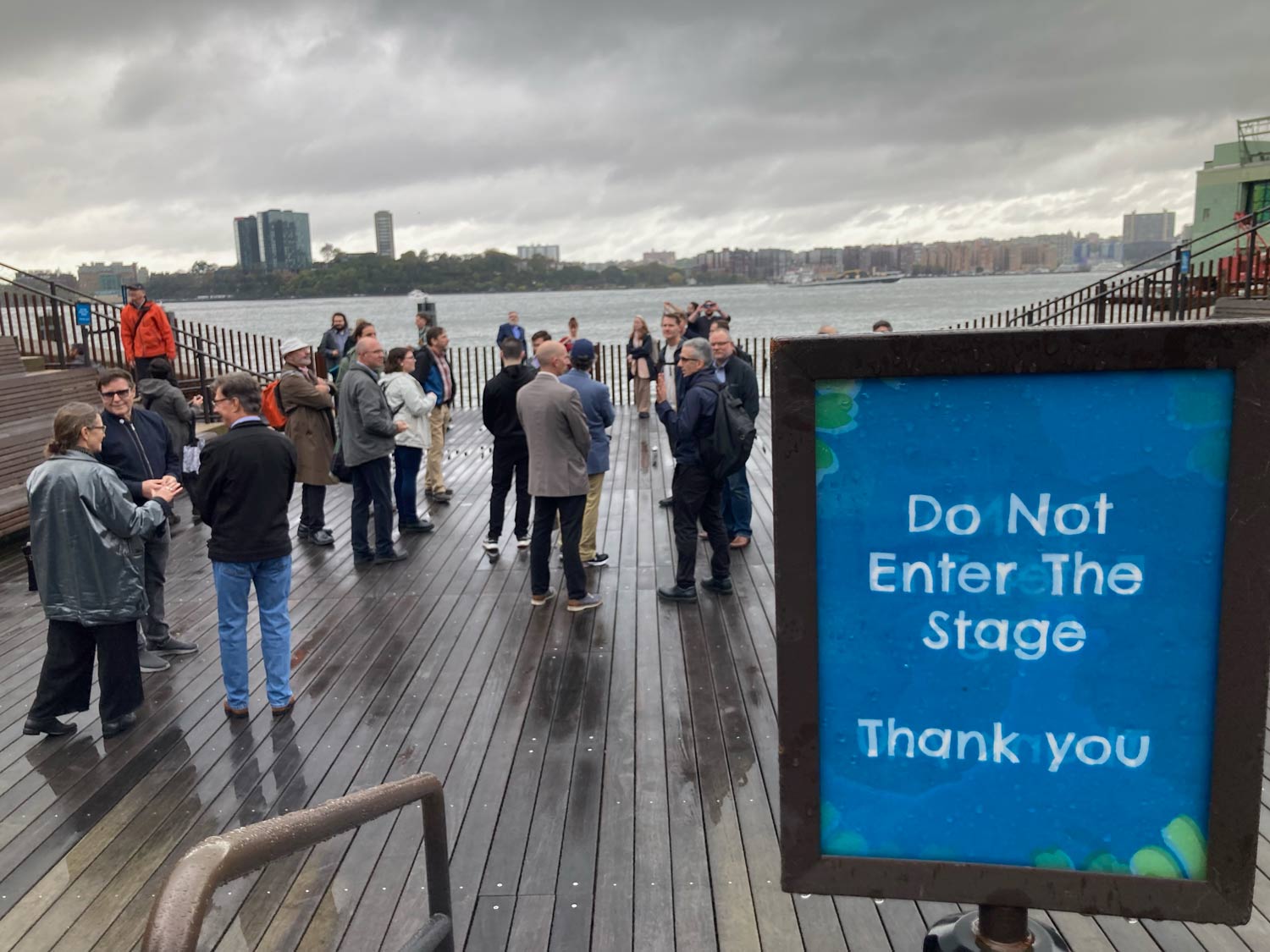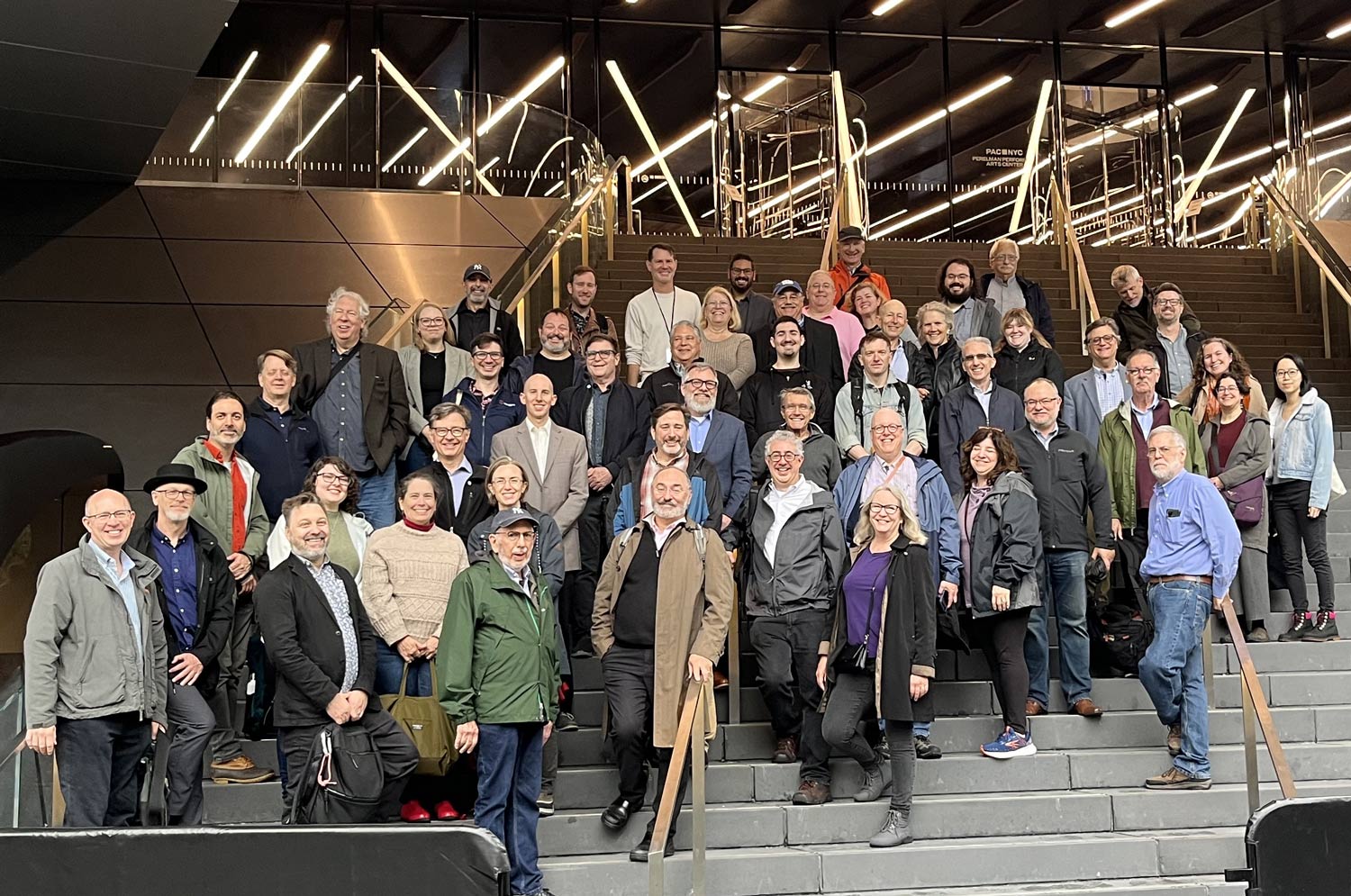Happy 40th Birthday to the American Society of Theatre Consultants!
ASTC was founded in 1983, by a group of twelve theatre consultants who gathered in New York City “to be able to talk to each other away from clients, manufacturers, and salesmen,” as Robert Davis, FASTC, and founding member tells it. Since that time, the members have strived to develop an organization devoted to elevating the practice of theatre consulting, requiring prospective members to have demonstrable experience as an unbiased provider of quality design services, and holding members accountable to high standards for ethical business practices. Membership has grown to 82 members, with 11 additional Emeritus members, two honorary members, and a few associates.
ASTC members come from large consultancy firms while others are solo practitioners. They specialize in different types of entertainment venues. The honor of Fellowship status was added in 2011, with 14 individuals so recognized. Interest in ASTC membership continues, with more applications coming in regularly. Members are excited for this growth, as Heather McAvoy, ASTC, President, notes, “Through the years the organization has become more open, welcoming and diverse.”
As the Society celebrates this milestone, several members reflected on what ASTC means to them.
Robert Long, FASTC, was part of the “second wave” of members after the founders. “I have always appreciated the professional comradery with the goal of offering the highest quality of advice to clients and design teams. In the first decade of the organization, members were reticent to share “design” information with each other. As more members joined the ASTC, the group became more willing to discuss design approaches and to share common interests. “
Peter Scheu, ASTC, Secretary: I particularly enjoy the free sharing of information and experience between Members that has developed over the years.
Michael DiBlassi, ASTC, IALD: ASTC is a forum for an exchange of ideas, best practices, and creative outcomes amongst a group of colleagues dedicated to the best venue design.
Chris Ochocki, ASTC: One of the things I enjoy most about being a member is the collaborative spirit between members. I think the willingness of fierce competitors to share knowledge and experience with each other in order to help move the industry as a whole forward is wonderful.
Jedd de Lucia, ASTC: …Sharing perspectives, sharing ideas and experience relating to common challenges, getting to know others in the industry…
Jack Hagler, FASTC: I love our philosophical discussions about theatre, theatres, and the art.
James Stockman, ASTC, IES Emeritus: For the past 45 years I have worked alone, ASTC gives me a way to communicate and collaborate with my peers.

ASTC members and guests listen to Peter Rosenbaum discuss the Park Avenue Armory during the 40th Anniversary Reception. The ASTC can’t go anywhere and not talk about buildings used as performance spaces. (Photo by Paul Sanow, ASTC)
Robert Long, FASTC: I enjoy sharing information through committee work, writing articles, and participating in conference activities.
Josh Grossman, ASTC: It provides advocacy within the theatre and AEC (Architectural Engineering and Construction) fields to advance a rational approach to theatre design codes and standards.
ASTC members agree that we must consider what the future might hold as we create our designs; what might happen in the industry years from now that should be accommodated into the building design today? Similarly, the ASTC membership thinks about where the Society itself is headed.
Jack Hagler, FASTC: I’m very happy with the direction we are going. I like that we are getting more structured as an organization. I want to see the [ASTC] continue to grow and for us to tell the world of the good our profession does to make good live performance spaces.
Todd Hensley, FASTC: I’d hope for all qualified Theatre Consultants to join ASTC. No other group can provide what ASTC does. It’s a valuable credential and a resource that bolsters the profession.
Robert Long, FASTC: The ASTC is in good shape. My main hope is that more members will participate in the organization; we need more participation.
Chris Ochocki, ASTC: My hopes would be continued collaboration and outreach with/to organizations that help expose younger and more diverse groups to our profession, in addition to mentoring of younger folks by the current membership to keep the [ASTC] growing.
Heather McAvoy, ASTC: Yes, we have a long way to go to become a truly diverse [organization], so I hope we continue to embrace diversity, equity and inclusion as critical values and expand our outreach and our programs to remain a vital and relevant industry leader and resource.

ASTC members milling about the stage at Little Island (we really do follow the rules normally.) From Little Island, New York City (photo by Howard Glickman, ASTC)
By Kimberly Corbett Oates, ASTC



